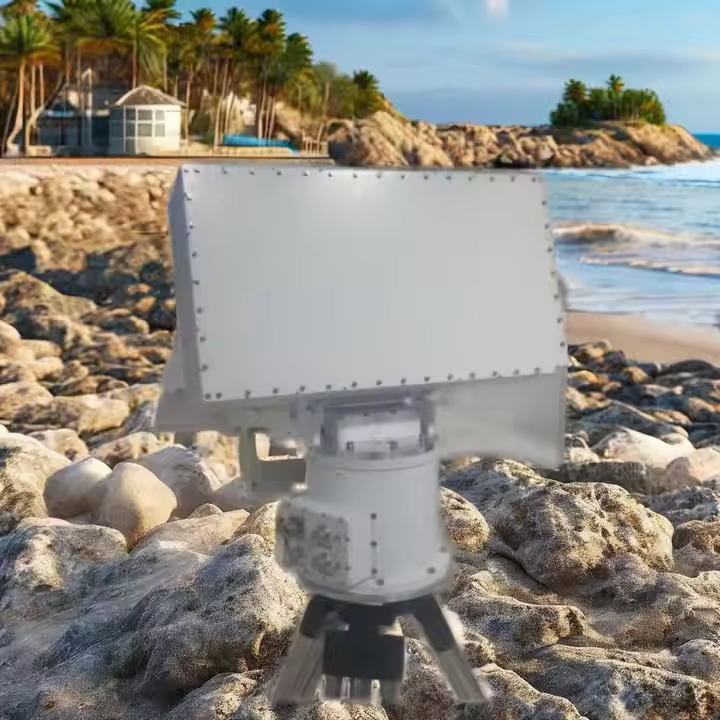Understanding Modern Radar Technology and Its Applications
Radar systems have revolutionized how we detect, track, and monitor objects across various environments. From military applications to weather forecasting, these sophisticated electronic systems have become integral to numerous industries and applications. By transmitting radio waves and analyzing their reflections, radar systems provide crucial information about object location, speed, and characteristics.
The evolution of radar technology has led to increasingly specialized and efficient systems, each designed to meet specific operational requirements. Today's radar systems incorporate advanced signal processing, artificial intelligence, and cutting-edge materials to deliver unprecedented accuracy and reliability.
Primary Categories of Radar Systems
Pulse Radar Systems
Pulse radar systems represent one of the most common and versatile radar configurations. These systems operate by transmitting short, powerful bursts of radio waves and measuring the time taken for echoes to return. The interval between pulses allows the system to determine both range and direction of targets with high precision.
Modern pulse radar systems utilize sophisticated pulse compression techniques to enhance detection capabilities while maintaining relatively low peak power requirements. This makes them particularly suitable for applications where power efficiency is crucial, such as in mobile installations or satellite-based systems.
Continuous Wave Radar Systems
Continuous Wave (CW) radar systems transmit uninterrupted radio signals, making them excellent for measuring target velocity through Doppler shift analysis. These radar systems excel in applications requiring precise speed measurements, such as law enforcement speed monitoring and sports analysis.
Advanced CW radar systems can incorporate frequency modulation to overcome traditional range measurement limitations, creating highly versatile systems for both civilian and military applications.
Specialized Radar Applications
Weather Radar Systems
Weather radar systems employ specialized configurations to detect and track atmospheric conditions. These systems use Doppler effects and dual-polarization technology to measure precipitation, wind patterns, and storm characteristics. The data collected helps meteorologists create accurate forecasts and issue timely weather warnings.
Modern weather radar systems can distinguish between different types of precipitation, measure particle sizes, and track storm movement with remarkable precision. This capability has significantly improved our ability to predict and respond to severe weather events.
Military Surveillance Radar
Military radar systems represent some of the most sophisticated radar technology available. These systems often combine multiple radar types and advanced signal processing to provide comprehensive battlefield awareness. Features like electronic counter-countermeasures (ECCM) and low probability of intercept (LPI) make these systems highly effective in combat situations.
The latest military radar systems incorporate phased array technology and artificial intelligence to track multiple targets simultaneously while maintaining resistance to jamming and interference.
Emerging Trends in Radar Technology
Cognitive Radar Systems
Cognitive radar systems represent the next evolution in radar technology. These systems use artificial intelligence and machine learning to adapt their operation in real-time based on environmental conditions and mission requirements. This adaptive capability significantly improves detection accuracy and reduces false alarms.
The integration of cognitive capabilities allows radar systems to optimize their performance automatically, leading to more efficient resource utilization and improved target discrimination in complex environments.
Software-Defined Radar
Software-defined radar systems offer unprecedented flexibility through programmable hardware platforms. This approach allows rapid adaptation to new requirements and threats without requiring hardware modifications. The technology enables a single radar system to perform multiple functions by simply updating its software configuration.
These systems demonstrate remarkable versatility in both civilian and military applications, providing cost-effective solutions for evolving operational needs.
Integration and Networking Capabilities
Multi-Static Radar Networks
Multi-static radar networks represent a significant advancement in radar system deployment. These networks consist of multiple transmitters and receivers working cooperatively to provide enhanced coverage and improved target detection capabilities. The distributed nature of these systems makes them highly resistant to jamming and interference.
Advanced networking protocols and data fusion algorithms enable these systems to share information seamlessly, creating a comprehensive surveillance picture that exceeds the capabilities of individual radar installations.
IoT Integration
The integration of radar systems with the Internet of Things (IoT) has opened new possibilities for data sharing and system control. This connectivity enables remote monitoring, automated maintenance scheduling, and real-time performance optimization across entire radar networks.
IoT-enabled radar systems contribute to the development of smart cities, autonomous vehicles, and advanced industrial automation applications.
Frequently Asked Questions
What is the maximum range of modern radar systems?
The maximum range of radar systems varies significantly based on factors such as transmitter power, antenna design, and atmospheric conditions. Military long-range surveillance radar systems can detect targets at distances exceeding 300 kilometers, while weather radar systems typically operate effectively up to 150-200 kilometers.
How do radar systems distinguish between different types of targets?
Radar systems use various techniques including Doppler processing, cross-section analysis, and pattern recognition to differentiate between targets. Advanced systems employ machine learning algorithms to analyze radar returns and classify targets based on their characteristic signatures.
Can weather conditions affect radar performance?
Yes, weather conditions can significantly impact radar performance. Rain, snow, and atmospheric turbulence can cause signal attenuation and create false returns. Modern radar systems use sophisticated signal processing and multiple frequencies to minimize these effects and maintain reliable operation in adverse weather conditions.

